It was March 1984 when TIME magazine published a famous issue featuring on its cover a plate containing two eggs cooked sunny side up with a single strip of bacon placed directly underneath them. The two yolks and their surrounding whites were positioned as eyes, and the bacon strip below was curved downwards to look like a frown. Printed above this face-like display of breakfast food was the word “CHOLESTEROL” in bold, followed by the ominous words, “And Now the Bad News…” immediately below it.
Eager to learn what was so bad about these two foods that they had grown up eating, concerned readers across America opened that chilling cover and flipped through the pages until they were greeted with the headline of doom…
“Sorry, It’s True. Cholesterol Really Is A Killer.” The succeeding article text went on to declare that cholesterol and dietary fats of the saturated persuasion are both unhealthy. It was the nutrition shot heard around the world that would spark the low-fat diet craze of the 80s, setting off several decades’ worth of misguided dietary advice.
The public was encouraged to avoid foods like butter in exchange for margarine, and so-called “vegetable” oils were pushed as a healthy alternative to animal fats. In recent years, we’ve seen more and more people shying away from this advice and returning to a more traditional view of fats. But the overall sentiment shared by many is still largely the same as it was 30 years ago: Even in spite of what the latest science has to say to the contrary. The good news is that the industries pushing this propaganda (which profit handsomely from all the low-fat hysteria), are starting to lose their grip on the narrative. But you can be sure that they’re not going down without a bitter fight.
Since my mission in life involves unearthing the truth wherever it might be found and sharing it with you, I’m committed to entering the ring and delivering a one-two punch on this important issue. After talking with various experts on the subject and conducting my own independent research, I’m convinced that misconceptions about dietary fat that stem from years of misinformation are harming Americans in a major way.
In fact, I believe that the way people eat with regards to what they think they know about healthy fats versus unhealthy fats is a leading cause of disease in our modern context.
The Lipid Hypothesis Myth: Saturated Fats and Cholesterol Are NOT the Enemy
Simply put, TIME’s 1984 analysis of cholesterol and saturated fat couldn’t be further from the truth. But it would be a mistake to peg all the blame on TIME, as these major fallacies about fat technically got their start back in the 1950s. A man by the name of Ancel Keys was among the first to propose the notion that saturated fat and cholesterol contribute to coronary heart disease – an ideology that would later be called the lipid hypothesis.
The lipid hypothesis was just that – a hypothesis (and a failed one, at that). But when the vegetable oil and food processing industries saw that it could benefit their bottom line, they began pumping gobs of money into research efforts designed to support it, aka “fake science.”
This would eventually create the illusion, through confirmation bias, that industrial oils mass-extracted from plants are superior to both saturated fat and cholesterol as found naturally in other foods.
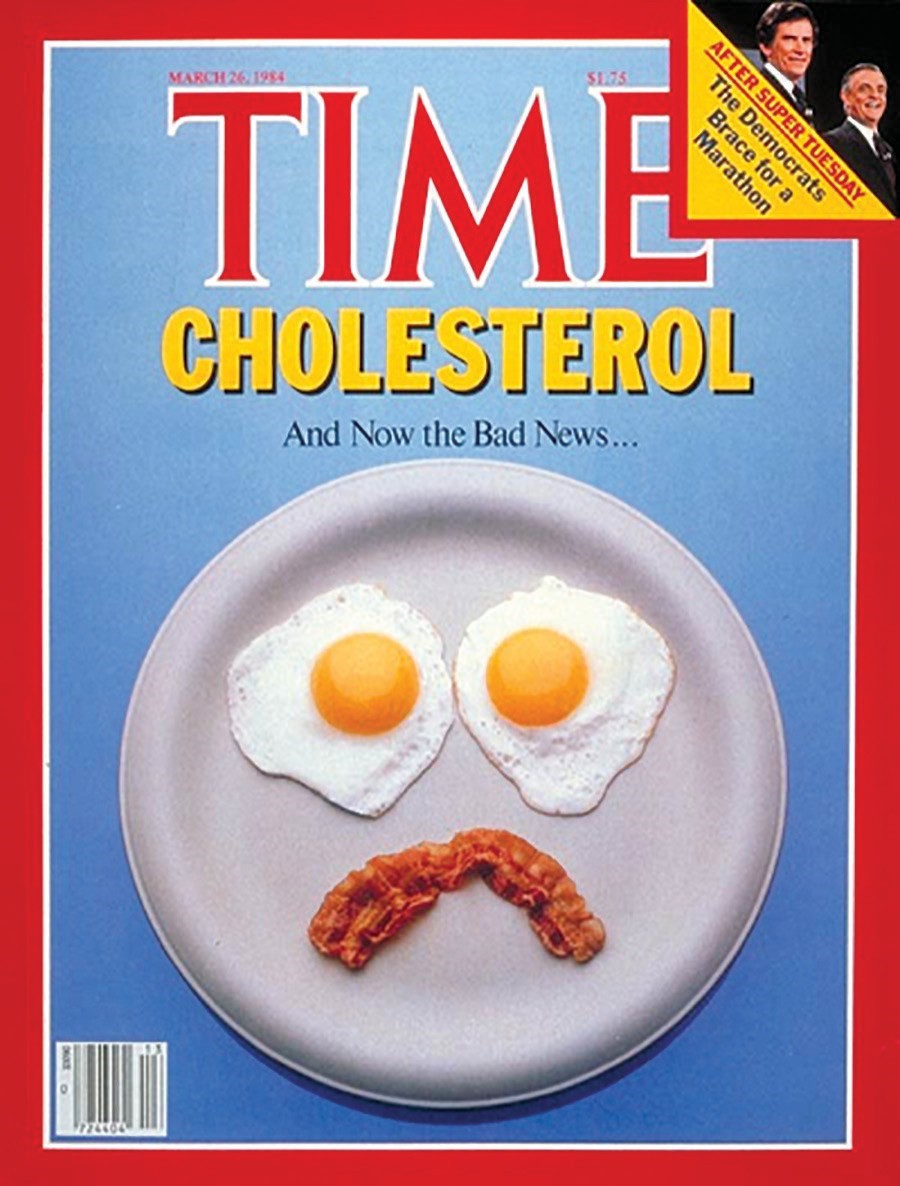
This Time magazine cover from 1984 played a key role in kicking off the low-fat craze that still has many people fearful of saturated fat
The late inventor and nutrition guru Nathan Pritikin would later pick up the baton in spreading the myth that low-fat contributed to better health. He also proposed cutting out refined sugar, white flour, and really all processed foods to keep chronic disease at bay. He advocated in favor of consuming only fresh foods and whole grains, stressing that vigorous exercise is duly important for maintaining a healthy lifestyle.
To his credit, many of Pritikin’s ideas made sense. But the mainstream media chose to adopt only the low-fat portion of his research, which it began perpetuating with a vengeance during the late 1970s and early 1980s as part of its war against saturated fat and cholesterol.
Consequently, Americans were systematically indoctrinated, driving many of them to buy more vegetable oil products, including margarine, which was marketed as a “healthy” alternative to real butter.
Interestingly enough, Pritikin would eventually abandon the low-fat part of his hypothesis in favor of simply eating whole, clean foods. His research would end up showing that sticking to a fat-free or low-fat diet actually harms health, causing things like memory problems, difficulty concentrating, chronic fatigue, depression, weight gain, and mineral deficiencies. But none of this was ever reported, and mainstream health authorities (in lockstep with the industrial oil industry) chose to push the low-fat diet anyway – even as they abandoned all of Pritikin’s other tenets.
If the food industry and major media would have been honest about Pritikin’s discoveries, they would have told the public that dietary fats are important for keeping the body running smoothly. Instead, they adopted a corrupted version of this, urging people to consume only certain types of dietary fats: polyunsaturated fats (PUFAs) and monounsaturated fats (MUFAs).
Why Industrial “Vegetable” Fats and Oils Aren’t Good for You
It was right around the time when TIME published its hit piece on cholesterol and saturated fat that the food industry offered up vegetable oils containing mostly PUFAs and MUFAs as the healthy alternative. PUFAs derived from corn, soy, and even cotton (which isn’t actually a food, by the way) were the first to be promoted. That is, until it was no longer defendable through science that PUFAs were beneficial.
When evidence began trickling in to suggest that PUFAs can cause cancer, the industry switched its narrative to MUFAs. That’s when canola oil (a hybrid of rapeseed oil) and olive oil, both of which are higher in MUFAs compared to PUFAs, emerged to take their place. Because it contains very little saturated fat – roughly 5 percent by volume – and higher levels of omega-3 fatty acids, canola oil was aggressively marketed as being the true “heart-healthy” alternative to saturated fat and cholesterol.
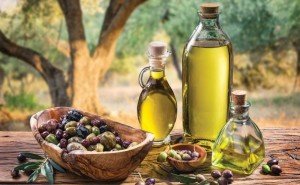
Quality olive oils made using traditional methods are far healthier than heavily processed olive oils found on most supermarket shelves
Olive oil was also adopted because of its similar compositional profile, marketing well as a key constituent of the “Mediterranean Diet.” The public was quickly attracted to olive oil as it conjured up images of toned, bronzed beauties relaxing on sun-drenched Grecian beaches snacking on Kalamata olives – who wouldn’t want a healthy lifestyle like this, right?
No doubt there’s much to be said about the Mediterranean Diet in terms of its health benefits, including olive oil consumption. But the idea that industrially-processed oils bearing these names somehow lend to amazing health benefits for the body is a bit of a stretch.
Neither canola oil nor olive oil – at least not the commercial varieties you get at the grocery store – are really all that healthy when you consider what typically goes into producing them. When all is said and done, they’re often among the most toxic oils you can put inside your body, and here’s why:
» Rancidity
One of the biggest problems with vegetable oils in general is that they’re simply not stable when exposed to light, oxygen, and heat. These exposures tend to turn vegetable oils rancid, which greatly minimizes their nutrient potential. Rancidity turns otherwise healthy constituents like omega-3s, for instance, into toxic poisons.
» Solvent-based Extraction Methods
Most industrially-processed vegetable oils (even some olive oils) are derived from plant materials using caustic chemical solvents like hexane. These solvents are mostly removed once these oils reach the refining stage of their processing, but trace amounts can still remain, causing damage to the body.
» Deodorization
To get rid of the foul-smelling odors associated with rancidity and chemical processing, vegetable oils further undergo a process of deodorization that alters the structure and shape of their fatty acids. This results in the creation of what are known as “trans” fats. These are a type of unnatural fat material that even mainstream doctors now admit is the worst type of fat that a person can consume. Trans fats are known to elevate levels of so-called “bad” cholesterol while lowering good cholesterol, and studies indicate that they can significantly increases one’s risk of developing heart disease.
» Hydrogenation
To mimic the properties of saturated fats that remain solid at room temperature (i.e. butter and coconut oil, which I’ll get into more below) and that don’t go rancid, food manufacturers will oftentimes subject vegetables oils to a process known as hydrogenation that deliberately turns them into semi- or fully-solid trans fats. Hydrogenated vegetable oils are commonly found in things such as processed nut butters, baked goods, fried foods, and candy. Furthermore, the science is clear that neither PUFAs nor MUFAs are healthy in abundance. Here’s what we know about how they affect the body:
» Polyunsaturated Fats
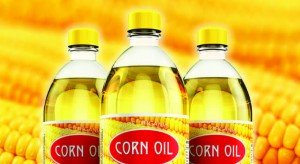
Polyunsaturated fats (PUFAs) such as corn oil were heavily promoted for decades as a healthy choice, but the evidence now shows they’re anything but
Research suggests that polyunsaturated fats, which are high in omega-6 fatty acids, inhibit nearly all bodily systems. This is mainly because they inhibit enzyme and metabolic activity. Unsaturated fats in general are detrimental to the immune system, and are known to kill white blood cells. Generally speaking, PUFAs interfere with not only immune function but also cellular respiration and insulin response. They’ve been shown to exhibit cardiotoxic effects, and a plethora of scientific evidence suggests that they further promote the formation of cancer.
Some of the more common vegetables oils that contain high amounts of PUFAs include soybean, corn, sunflower, safflower, canola, sesame, peanut, and flax.
Conventional feedlot cattle also produce high amounts of PUFAs in their meat and fat because they’re usually fed corn and soy products.
» Monounsaturated Fats
They’re similar to PUFAs, but MUFAs are slightly healthier in that they don’t go rancid as easily. They’re much better suited for cooking than PUFAs, though most vegetable oils typically contain some ratio of PUFAs to MUFAs (as opposed to just one type of fat or the other).
Where MUFAs go wrong is in their overabundance of oleic acid, which research shows can create serious imbalances at the cellular level. One negative effect of their consumption is inhibited production of prostaglandin. This is a hormone-like grouping of lipids that help maintain homeostasis throughout the body, including by balancing the body’s inflammatory response.
Vegetable oils that are dominant in MUFAs include olive, peanut, rapeseed, and canola oils (along with lard, which because it also contains high amounts of saturated fat is considered to be a healthy fat).
The good news is that many of these oils have lost much of the allure they once had. But there’s one vegetable oil in particular (and several others also coming up in the ranks, which I’ll discuss further below) that is still considered by many people to be a health food: canola oil.
The processed food industry has perhaps seen its greatest successes with canola oil. It’s an omega-3-rich fat that, because of its high levels of MUFAs, became the obvious choice once PUFA-dominant oils were exposed as being unhealthy. Canola oil was quickly branded as having heart-healthy properties similar to those of olive oil, and it’s persisted as one of the most popular vegetable oils ever since.
A modified, low-erucic acid version of rapeseed oil, canola oil represents yet another heat-processed, chemical-extracted oil with many destructive properties. Unlike traditional oils of old that were extracted using things like stones – and always with low temperatures – modern canola oil is just another industrial oil with altered constituents. Even though it has impressive levels of omega-3, these fatty acids are so damaged that they provide few, if any, health benefits.
Intake of canola oil, especially apart from saturated fat (which acts as a protective buffering agent), can lead to:
- Fibrotic lesions in the heart
- Vitamin E deficiency
- Undesirable changes in blood platelet composition
- Shortened lifespan (resulting from cell membranes becoming more rigid)
- Growth retardation

Canola oil, which is produced from the rapeseed plant, is so heavily processed that any health benefits are virtually eliminated
Interestingly, when saturated fats are included as part of a diet containing canola oil (or another type of vegetable oil), these undesirable effects have been shown to recede. This suggests that the body benefits greatly from saturated fat – even when other bad fats are present – helping to protect it against breakdown and disease.
Just to be clear, it’s not that all vegetable oils are inherently bad. Many of them have a rich history of safe use in traditional diets all across the globe and throughout history: rapeseed, peanut, and sesame oils being among these (so long as they’re extracted using traditional methods).
It’s primarily that, in our modern context, vegetable oils are processed using toxic methods, and that people are being told to consume copious amounts of them while avoiding saturated fats and cholesterol.
The Weston A. Price Foundation (WAPF) warns that people today consume as much as 30% of their diets as PUFAs, when people throughout history consumed no more than about 4 percent of their diets as PUFAs. And again, the small percentage that they did consume came from natural sources, not from chemical factories.
There’s simply no good reason to consume industrial vegetable oils period, especially when truly healthy alternatives exist that are more than capable of nourishing our bodies without causing harm. PUFAs, MUFAs, and omega-3s all exist for a reason, of course.
But the takeaway here is that we don’t need nearly as much of them as health authorities claim, and especially not from industrial vegetable oils. Some of the best natural sources of these fats include raw nuts, whole vegetables, avocados, eggs, fish, and animal meat and fat.
Cholesterol and Saturated Fat: the Real “Superfoods”
What many of us do need more of is cholesterol and saturated fat. These important nutrients, which I would consider to be “superfoods,” are key components of a healthy diet. They perform so many vital functions inside the body that it would be a grave mistake to avoid them – despite what the media, public health authorities, and possibly even your doctor claim to the contrary.
Cholesterol
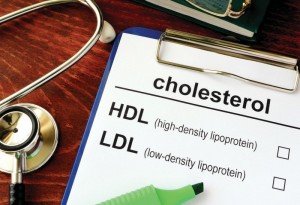
Many doctors are overly focused on cholesterol numbers without understanding the actual role that cholesterol plays in the body
As I mentioned earlier, cholesterol usually gets a bad rap because people think it’s responsible for clogging arteries. But this is only half of the story. When cholesterol builds up in the arterial system, it’s because there was some pre-existing issue (inflammation being one example) inside the blood vessels that necessitated the body having to use it for repairs. That’s what cholesterol does, after all, is repair structurally weak or damaged tissue.
Endogenous cholesterol (meaning from inside the body) is primarily manufactured in the liver, as well as in human cells. It’s a highly-nutritive, high-molecular-weight alcohol compound that the body uses to:
» Maintain strength, stability, and elasticity in cell membranes. (Too many PUFAs does the exact opposite, forcing out saturated fats and causing cell membranes to become flabby and weak)
» Produce vital corticosteroids. This includes sex hormones like androgen, testosterone, estrogen, and progesterone, as well as stress hormones like cortisol and various other hormones that the body needs to protect against heart disease and cancer.
» Generate vitamin D, a vital, fat-soluble vitamin that strengthens bones and the nervous system, as well as facilitates growth, nutrient metabolism, muscle tone, insulin production, reproduction, and immune function.
» Produce bile salts, which are essential for digestion and the assimilation of fats and other nutrients
» Protect against free radical damage (which could explain why cholesterol levels increase with age)
» Facilitate the proper function of serotonin receptors for balanced brain chemistry (which explains why low cholesterol has been linked to overly aggressive and violent behavior, as well as depression and suicidal tendencies).
» Promote growth and development (hence why cholesterol is a key constituent in breast milk).
» Maintain the integrity and health of the intestinal wall (low-cholesterol, vegetarian diets, on the other hand, are linked to leaky gut syndrome and other intestinal disorders).
» Protect against infections.
It’s important to note that cholesterol can become damaged or oxidized much in the same way as other fats. Powdered eggs and milk are one source of unhealthy cholesterol, as are meat products and fats derived from feedlot cattle fed chemical- and additive-laced grains. Frying or otherwise cooking meats at very high temperatures can also be damaging to the integrity of cholesterol.
Another thing to keep in mind is that high cholesterol levels aren’t an indication that cholesterol needs to be lowered. Rather it can be a sign that the body needs more cholesterol to perform a certain function, such as antioxidant protection against free radical damage. If you think of your body like a neighborhood, and systemic damage and maintenance demands as crime, then cholesterol is the responding police force. You wouldn’t blame heart disease, say, on high cholesterol, just as you wouldn’t blame crime on the police officers that are sent in response to it.
Saturated Fats
While the human body is able to synthesize saturated fat from carbohydrates, there is much debate over whether or not it can produce enough – especially to offset heavy intake of PUFAs and MUFAs, which are in almost everything these days. However, we do know for sure that saturated fat is absolutely essential for the body to function as it should.

Your skin and cells both benefit from consuming sufficient quantities of healthy fats
Without saturated fat, your body wouldn’t be able to produce hormones or energy, for instance. Your cell membranes would also quickly degrade without it, as would the protective padding around your vital organs. Saturated fat further facilitates important cell signaling and stabilization processes throughout the body, and serves as a catalyst for the delivery of calcium into bones.
Unlike the other types of oils we discussed, saturated fat is unique in that it’s immune to oxidation reactions because it contains no double bonds. In other words, it isn’t vulnerable to toxic changes from extreme heat, for example. This makes it a much safer alternative to both PUFAs (which contain two or more double bonds) and MUFAs (which contain one double bond).
For this reason and many others, Dr. Mary Enig, PhD, recommends that up to 50% of the fats in one’s diet be saturated. This isn’t hard to achieve if one knows the types of foods that contain them, which include both animal and plant sources.
Foods with the highest percentages of saturated fat:
- Coconut: 86%
- Palm kernel: 82%
- Cocoa butter: 60%
- Butter: 51%
- Beef tallow: 50%
- Palm oil: 49%
- Lard: 39%
- Duck fat: 33%
- Chicken fat: 30%
- Cottonseed: 26%
- Salmon oil: 20%
- Peanut oil: 17%
- Soybean oil: 16%
- Olive oil: 14%
Keep in mind that some of these fats also contain lesser amounts of PUFAs and/or MUFAs, which is fine as long as they’re extracted without chemicals or high heat that might damage these volatile constituents. When consuming any of these fats, it’s advisable to stick with clean, organic sources whenever possible, and in the case of animal-based fats only pastured and grass-fed varieties.
Here’s a full breakdown of animal- and plant-based fats and their respective compositions:
Animal Fats
» Duck and goose fat: 35% saturated fat, 52% MUFAs (including small amounts of antimicrobial palmitoleic acid), and 13% PUFAs
» Chicken fat: 31% saturated fat, 49% MUFAs (including moderate amounts of palmitoleic acid), and 20% PUFAs (most of which is omega-6 linoleic acid). Chickens that eat more fish meal or flax will produce fat with higher levels of omega-3
» Lard (pork fat): 40% saturated fat, 48% MUFAs (including small amounts of palmitoleic acid), and 12% PUFAs. Pastured lard contains some of the highest known natural levels of vitamin D
» Beef and mutton tallows: 50-55% saturated fat, 40% MUFAs, and very small amounts of PUFAs (usually below 3%). Suet, which is fat taken from the cavities of beef and sheep, typically contain much higher levels of saturated fat – upwards of 70-80%
Tropical Oils
» Coconut oil: 92% saturated fat, more than two-thirds of which is comprised of medium-chain fatty acids
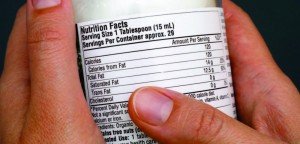
Despite a recent news article to the contrary, coconut oil is still one of the healthiest fat sources, especially for people who don’t consume animal fat
» Palm oil: 50% saturated fat, 41% oleic acid (MUFA), and 9% linoleic acid (PUFA)
» Palm kernel oil/red palm oil: both very high in saturated fats
Vegetable Oils
» Olive oil: 18% saturated fat, 48% oleic acid (MUFA), and 34% omega-6 linoleic acid (PUFA). While relatively heat stable, olive oil is high in omega-6, too much of which can throw off its balance with omega-3 and trigger an inflammatory response and increase the risk of heart disease
» Sesame oil: 15% saturated fat, 42% oleic acid (MUFA), 43% omega-6 linoleic acid (PUFA). Sesame oil cooks fairly well at high heat, but its high omega-6 content could pose health risks
» Safflower, sunflower, corn, soybean, and cottonseed oils: All of these contain greater than 50% omega-6, with safflower oil contains nearly 80% omega-6. It’s best to avoid these entirely
» Canola oil: 5% saturated fat, 57% oleic acid (MUFA), 23% omega-6 (PUFA), and 10-15% omega-3
» Flax seed oil: 9% saturated fat, 18% oleic acid (MUFA), 16% omega-6 (PUFA), and 57% omega-3
Discover why grass-fed butter is a super-food.
Editor’s Note: This article first appeared in the August 2017 edition of TTAC newsletter and was updated in June 2021.
Article Summary
The public has been told that cholesterol is a killer, but this isn’t true.
Industries saw an opportunity to make a huge profit selling processed oils and pushed the idea that saturated fats were bad.
Commercial vegetable oils are often among the most toxic oils you can put inside your body.
The body benefits greatly from saturated fat – even when other bad fats are present.
Cholesterol helps to repair structurally weak or damaged tissue.
Doctors recommend that up to 50% of the fats in one’s diet be saturated.
One of the best animal-based fats you can eat is butter derived from pastured, grass-fed animals.










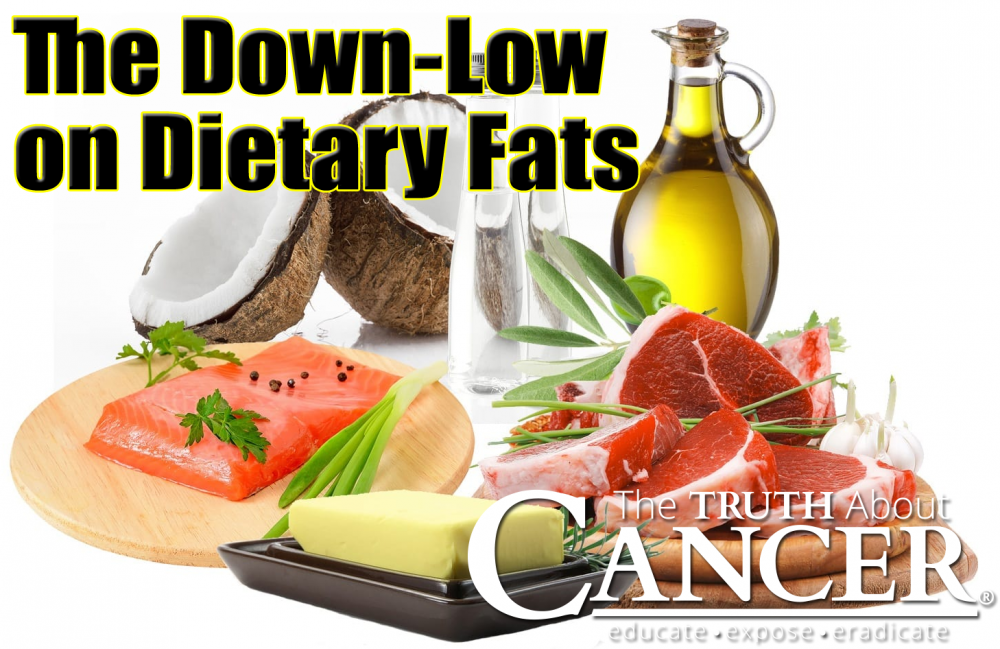








Awesome article, thank you Ty for all that you do
THANK-YOU!!! GOD BLESS YOU AND ALL YOUR FAMILY AND CO-HEARTS.
Having a high cholesterol 10 point 6. Two thirds are the bad cholesterol. I would have liked to know how bad the bad cholesterol is to us?
Thank you for this article!
Thanks Ty for this article, it has shed some light on my situation in the 1980’s and 1990’s, when the medical profession said there was a war going on in my body and they did not know what it was they said my body was attacking itself and had knocked out my thyroid and immune system, my immune system came back with time, but not my thyroid it goes back to the cholesterol and low fat times an now I can see the picture.
Thank you very much,
Thanks for this Article
And thank YOU for empowering yourself with this important information, Ernest!
What is your opinion on low fat diet for women with breast cancer or who have had ductal carcinoma in situ? I’ve heard from some, that fats increase estrogen. Which could be detrimental to those with hormone dependent breast cancer. Of course I don’t want to believe this, because increasing good fats in my diet has done only good.
Thank-you for all you do. I have learned so much from
The truth about cancer. I am sharing the truth whenever
possible. Very Grateful. Keep up the good work.
Blessings to you and your Family
Hello Denise!
Thank you for the kind words and the support of our mission. God bless!
So, would you say that all these positive effects would also be found in real homemade Kefir since it’s fermented from grass-fed cow milk (the same which is used to make grass-fed butter)?
If that’s the case, then Kefir also includes even greater health benefits from the probiotics as well. 🙂
No, most cardiologists still say that saturated fat clog the arteries. With heart disease in my family and most of my relatives dying from heart attacks, I prefer to eat very little saturated fat. Some vegetable oils have some saturated fats in them as well as mono or poly saturated fats. Such as olive oil or avocado oil. Which are the two primary oils I generally use.
There is nothing wrong with animal fats in your diet. As a young boy, I was brought up on a diet which included meals of beef-dripping sandwiches. I am now in my 85th year, and fit as a butcher’s dog. The low-fat industry should be prosecuted for promulgating all this cholesterol rubbish. By the way, I take a daily dose of 2 mg. of chelated copper to protect against strokes, aneurisms and heart attacks.
Yes, I totally agree with you. This is another reason why (besides the PLANDEMIC) that the Globalists are hated. Episode 1 of any Truth About Cancer version plus the whole series is so enlightening and should be seen by the world.
Joining WestonAPrice.org is one of the best $40/year I spend. I have learned so much from them and have had so much fun being a member. That and getting a degree in Holistic Nutrition. Dr. Price was an amazing man and should be known and mentioned by every doctor, functional or otherwise. Medical schools don’t teach about nutrition so you have to learn it on your own or pay someone to teach you. You still have to learn it and teach your kids.
I absolutely agree 👍
Stop killing animals! We don’t need their products to survive and thrive – Go Vegan!